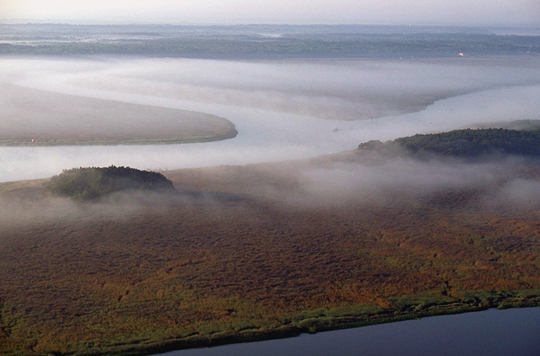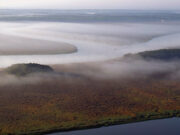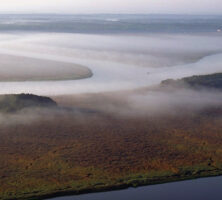The Upper Coastal Plain of Georgia is bounded on the north by the fall line and extends south to Florida and east to the upper terraces of the Lower Coastal Plain. Although the exact boundary between the Upper and Lower coastal plains is inexact, it generally falls along a line from Echols County, in southwest Georgia, to Screven County, in east central Georgia.
Distinct physiographic regions occur within the Coastal Plain of Georgia as a result of erosion or burial during successive periods of submergence with rising and falling sea levels during the Cretaceous, Paleogene, and Neogene periods (135 million to 11,000 years ago). Along the lower edge of the Piedmont province, sediments weathered from the uplands were deposited near the shore and formed the fall line hills, a narrow, hilly belt of deep sands. However, most parent materials of the Coastal Plain are marine deposits (sands and clays). Limestone deposition occurred across the state in conjunction with a fluctuating marine channel that once connected the Gulf of Mexico and the Atlantic Ocean until the early Miocene (25 million years B.C.) Epoch. A porous limestone formation forms the Floridan aquifer system, which underlies a large portion of the Georgia Coastal Plain and serves as a major source of drinking and industrial water for southern Georgia and Florida. Coastal Plain soils in Georgia are extremely variable, ranging from excessively drained to poorly drained sites depending on landform, soil permeability, and soil particle size.

Courtesy of Georgia Department of Economic Development.
Once dominating the southeastern Coastal Plain, the ecosystem of longleaf pine and wiregrass harbored the most species-rich communities reported in North America. Today, this forest type has almost disappeared because of regionwide conversion to agriculture, urbanization, and fire suppression. This vegetation evolved in a landscape of frequent lightning strikes and fire ignition, and consequently these woodlands and adjacent wetland communities are dependent on frequent fire to maintain their biological richness and ecosystem health. Because of the rarity of the overall ecosystem today, many of the resident plant and animal species are considered critically endangered or threatened.
The longleaf forest played an important role in the cultural, biological, and economic history of the southeastern Coastal Plain. Native Americans were promoters of fire and used it to shape their environment for hunting. Because of the economic value of longleaf-pine saw timber (trees large enough to saw into lumber, as opposed to smaller trees suitable for pulpwood), vast tracts of mature pine forest were laid bare once railroad transport became available in the late 1800s. Georgia’s production of naval stores (such products as tar, pitch, and turpentine) exceeded 70 percent of the world supply in the early 1900s. Today, forestry is a major industry of the state, although loblolly or slash pine plantations have replaced the longleaf forests. Recently, as irrigation from groundwater sources has increased, large acreages of the Coastal Plain sandy soils have been converted to agricultural uses.
Several major drainage systems of the Coastal Plain of Georgia—including those of the Chattahoochee, Flint, Oconee, Ocmulgee, and Altamaha rivers—originate in the Piedmont or mountains. Black-water rivers (so called because the water is tea-colored from naturally occurring organic compounds), such as the Ohoopee, the Withlacoochee, Alapaha, and Satilla rivers, originate in the Coastal Plain. Large floodplains and swamp systems are often associated with these river systems, which are critically important for restoring groundwater, preserving wildlife habitat, and reducing water pollution.





